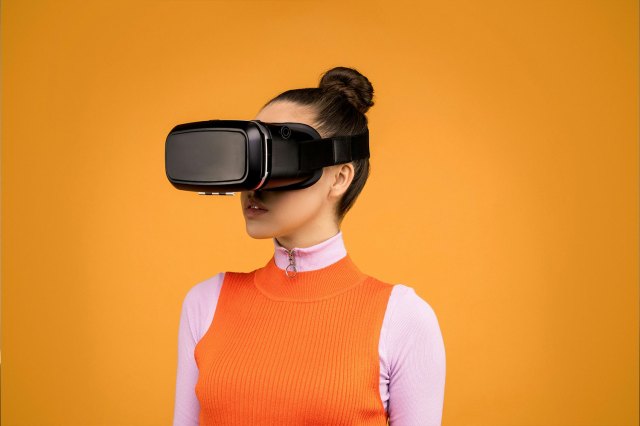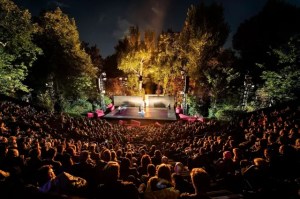Mixed-reality musicals – can you watch live theatre on a VR headset?
Is there a way to harness new technology to access remote audiences?

Imagine it – the house lights dim, you grab your glass of wine and lean back to watch a sold-out performance of a starry West End show, performed live in London. But instead of having to trek into the capital, you don a VR headset and see the full production from your sofa – alongside tens of thousands of other punters. Forget queueing for the loos.
That’s the sort of experience being proposed by Scene Partners, who have announced a new StagePlay platform aiming to capture the essence of live entertainment and play it through mixed reality headsets like the Apple Vision Pro or Meta Quest. In essence, they aim to replicate the immersion of live entertainment, but for remote punters: through 360-degree filming and audio capture, the hope is to mimic being inside an auditorium.
Virtual reality is not a new frontier for the theatre world. It’s certainly a creative avenue that some have experimented with in a more specific, controlled environment. Yet, as VR headsets gain in quality, mass appeal and staying power, perhaps it won’t be long before this new form of entertainment is explored with more gusto.
Of course, nothing could ever match the true experience of being sat in an auditorium, laughing, reacting and gasping alongside hundreds of other spectators, heartbeats hammering in tandem. But, say, a sold out production offered a one-night-only chance for those with access needs, or financial/geographic barriers, to see their favourite play or musical as if live, is that the natural evolution of something like National Theatre Live?
Research from the University of Sussex has highlighted the benefits and flaws of the approach. They set up a test whereby VR headset users were made to feel as though they were sat on the front row at a stage production, watching live as the production goes on.
The results were fascinating: the experience provided a wellbeing boost for viewers, though the artificiality of the experience didn’t allow the “atmosphere” of a live show to shine through. One line from the report stood out though: those trialled agreed that the mixed-reality experience could “create a digital pipeline for recruiting new theatregoers and reaching underserved audiences.” In a time of rising costs, this doesn’t seem like a bad idea.
Of course, StagePlay could go one step further and emulate the work being done at venues like the Wales Millennium Centre in Cardiff. What if these mixed-reality headsets combined live performance with digital effects and trickery? If Lear’s storm clattered around an auditorium, or a raging siege at Harfleur overwhelms the senses? As VR gets more popular, it’s a conversation more creatives could have.

















